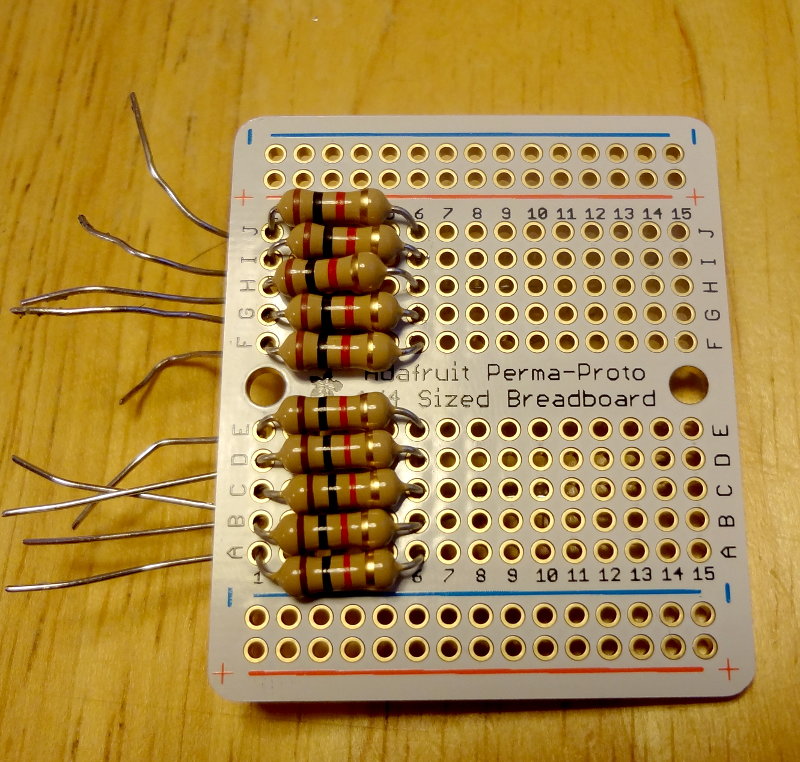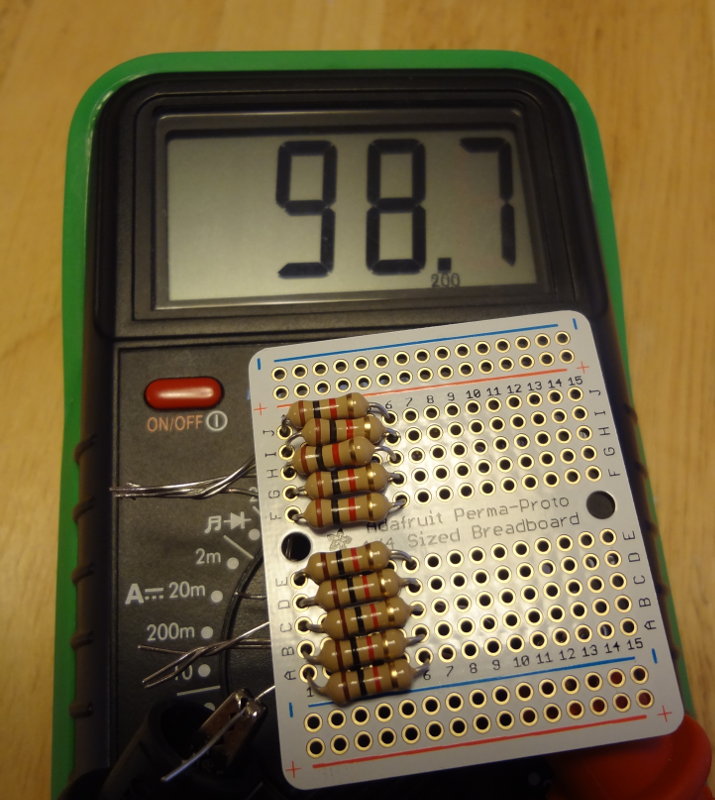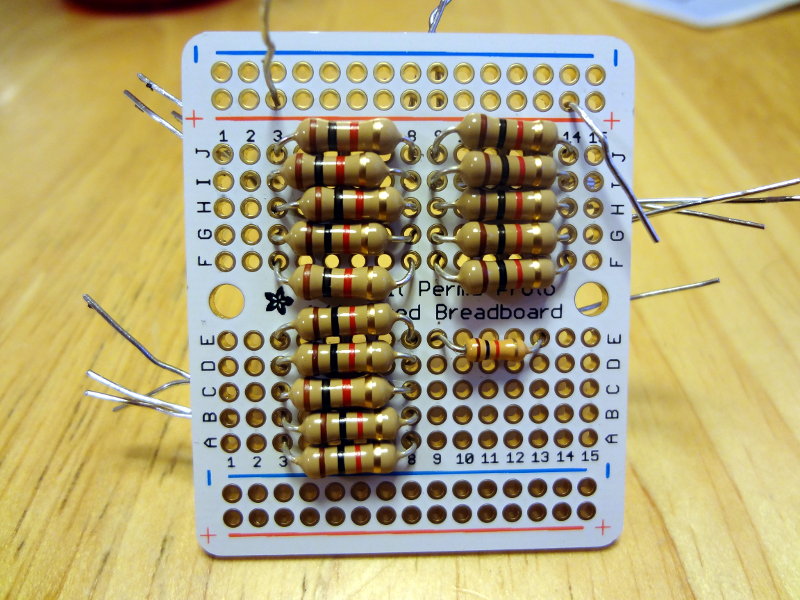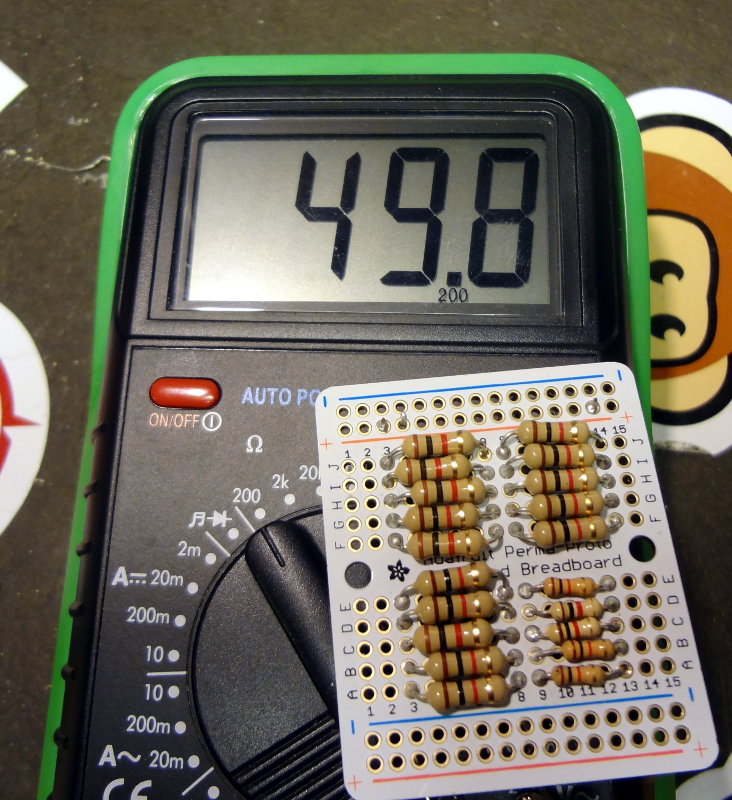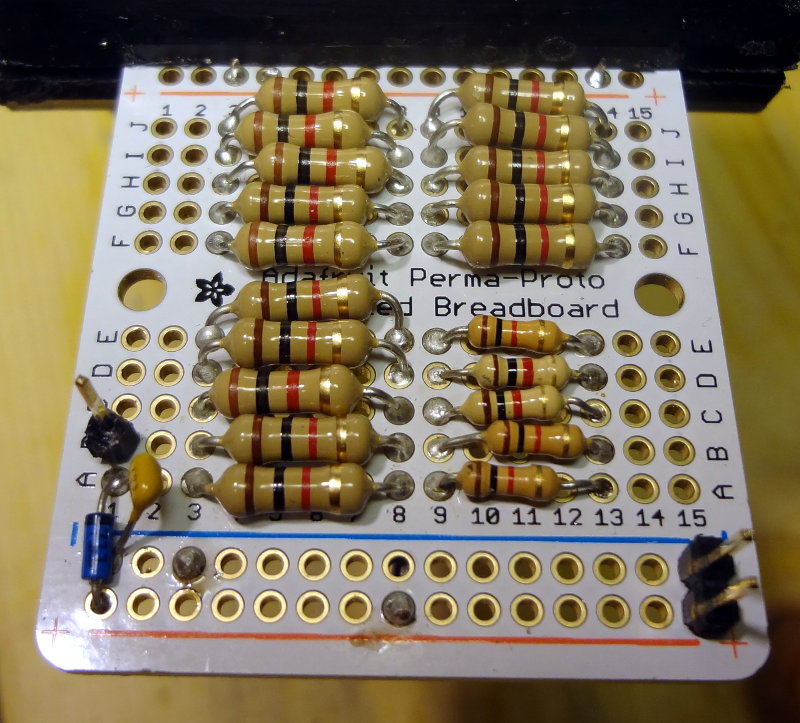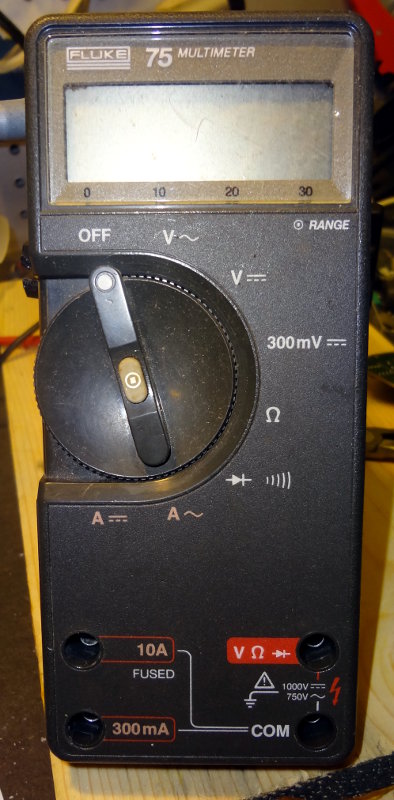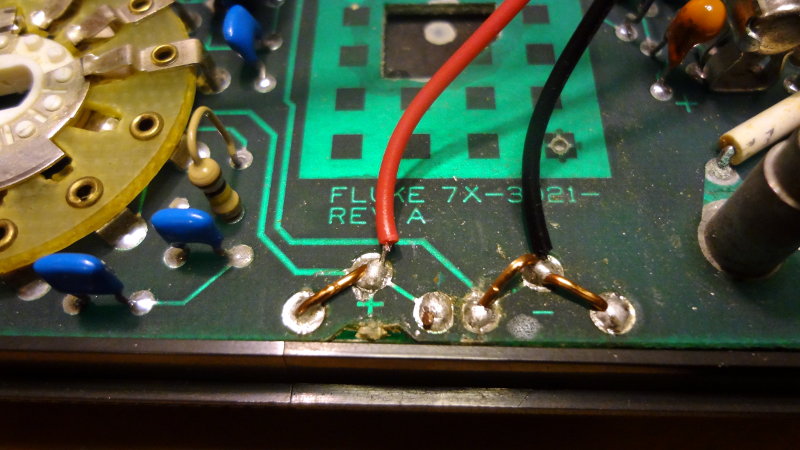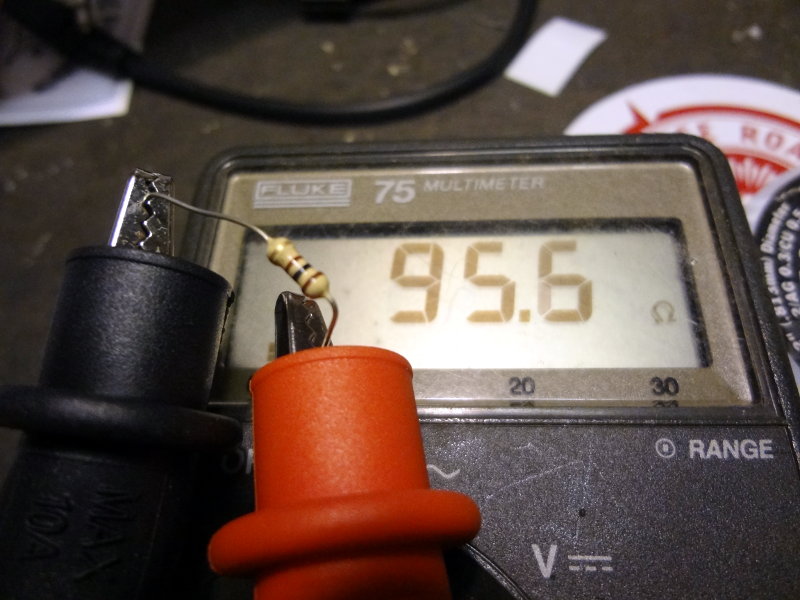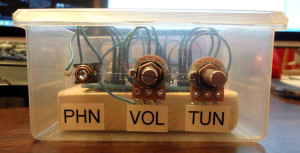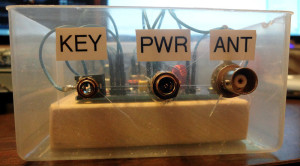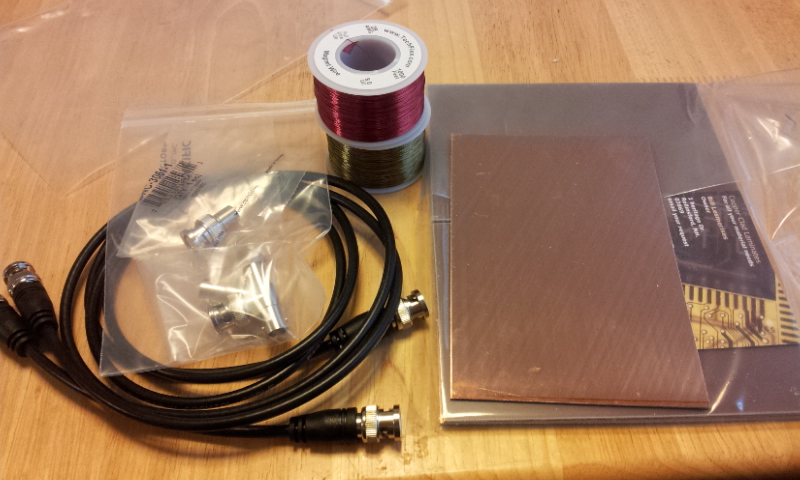Every ham needs a dummy load, right? I’ve been wanting to build a small little dummy load for QRP for a while so it became one of my day-off projects today. The dummy load kit from Hendricks QRP Kits served as my model for this build.
I emptied my inventory of 1kΩ 1/2W resistors and scrounged up 5 more 1kΩ 1/4W resistors out of the bag of goodies from Jason/NT7S (saved me a trip to Radio Shack). A total of 20 resistors went into the dummy load: 15 1/2W and 5 1/4W for a total theoretical power dissipation of 8.25W.
The platform for my dummy load is an Adafruit quarter size Perma-Proto board which I’ve really enjoyed working with. Here it is with half of the resistors placed on the board, but not soldered in yet.
Just under 100Ω with half the resistors in, so my layout is working.
It was a bit of a squeeze to get those 1/2W resistors in, but it worked. The 1/4W resistors fit easier into each row.
With everything soldered into place, I measure just under 50Ω. Pretty good.
The Hendricks dummy load also lets you use measure power output using a volt meter so I added that part in as well. A 1N5711 diode (again from the bag of goodies from Jason), a 10 nF cap and some header pins finishes the dummy load.
The two pins at the lower right of the board are for the connection to the radio, and the single pin on the left side is the voltage/power measurement point. All that remains now is to find an enclosure to put it in and add a convenient way to connect to the radio and access the measuring points.
